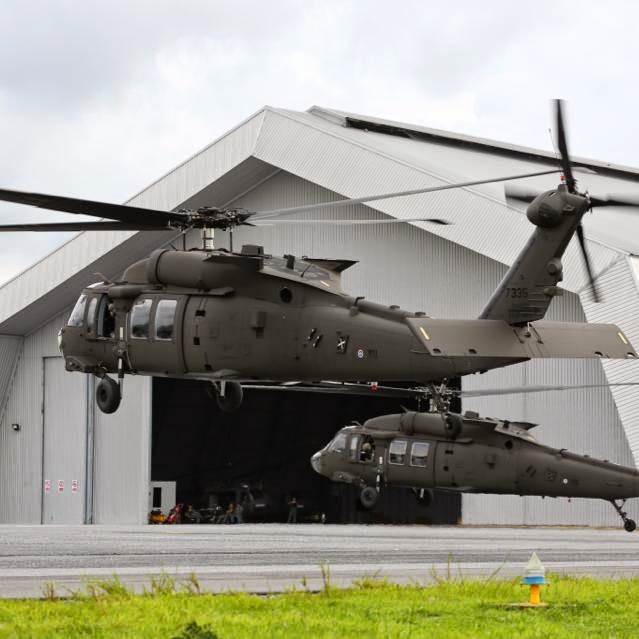Flying High: UH 60 Helicopter Security Protocols You Have To Know
Flying High: UH 60 Helicopter Security Protocols You Have To Know
Blog Article
Recognizing the Mechanics and Engineering Behind Uh 60 Helicopters
The UH-60 helicopter, typically understood as the Black Hawk, stands as a pinnacle of contemporary rotorcraft modern technology, personifying a mix of durable design and complex technicians. As we peel off back the layers of the UH-60's design, a world of intricate systems and thorough engineering comes to light.
Background of UH-60 Helicopters
The background of UH-60 helicopters traces back to the late 1970s when the USA Military sought a sophisticated and functional utility helicopter to replace its aging fleet. In response to this demand, the Sikorsky Airplane Company created the UH-60 Black Hawk helicopter. Presented in 1979, the UH-60 swiftly ended up being a staple in military operations as a result of its remarkable abilities.
The UH-60 was made to master a variety of missions, consisting of army transportation, medical evacuation, digital warfare, and unique operations. Its capability to adapt to various functions made it a valuable property to the united state Military and other army forces all over the world
For many years, the UH-60 platform has actually gone through numerous upgrades and variations to enhance its efficiency and equal evolving objective requirements. These helicopters have actually seen comprehensive solution in conflicts such as the Gulf Battle, Afghanistan, and Iraq, showcasing their reliability and convenience in varied operational settings. The UH-60's rich background is a testament to its long-lasting legacy as a leading energy helicopter.

Engine and Power Solutions
Utilizing innovative propulsion modern technology, UH-60 helicopters are outfitted with innovative engine and power systems to make sure ideal performance and reliability in a variety of operational scenarios. The UH-60, commonly called the Black Hawk, is powered by 2 General Electric T700-GE-701D engines, each with the ability of providing up to 1,940 shaft horse power. These turboshaft engines provide the necessary drive for the helicopter to accomplish its goals effectively, consisting of army transport, clinical emptying, and combat support.

Rotor System and Aerodynamics
Just how do the blades system and the rules of aerodynamics of UH-60 helicopters contribute to their operational performance and trip abilities? The rotor system of the UH-60 helicopter plays an essential role in giving lift and propulsion.
The rules of aerodynamics likewise play a crucial function in the performance of UH-60 helicopters. The structured fuselage and rotor blade layout minimize drag, enabling the helicopter to achieve greater speeds and better gas effectiveness. The aerodynamic design of the UH-60 additionally contributes to its ability to run in diverse ecological problems, including high elevations and hot temperature levels.
Avionics and Trip Control Solution

In its elaborate control with the blades system and aerodynamics of UH-60 helicopters, the avionics and trip control systems form an essential network of modern technologies shaping the aircraft's functional capabilities. Avionics incorporate the electronic systems utilized for interaction, navigation, and monitoring different airplane functions. In the UH-60, these systems consist of electronic displays, interaction radios, GPS navigation, climate radar, and autopilot systems. These avionics systems supply crucial information to the pilots, boosting situational understanding and making sure efficient and risk-free operation of the helicopter.
The trip control systems of the UH-60 are accountable for translating the pilot's inputs into the suitable adjustments to the rotor system, making certain secure flight and ability to move. These systems consist of hydraulic actuators, servos, and computer systems that function with each other to regulate the tail and main rotors, in addition to various other trip control surface areas. By specifically taking care of the helicopter's trip dynamics, these systems enable pilots to carry out a large range of goals, from transportation and search-and-rescue to use this link battle procedures, with accuracy and self-confidence.
Duty and Applications in Aeronautics
Avionics systems in UH-60 helicopters incorporate a variety of digital systems that aid in navigating, communication, surveillance, and managing numerous aircraft functions. These systems include electronic displays, auto-pilot systems, interaction radios, GPS navigating equipment, and climate radar. Additionally, these systems include safety functions such as auto-pilot modes, terrain awareness cautioning systems, and security augmentation systems to improve the total safety and functional capabilities of the UH-60 helicopters in different goals, including troop transportation, clinical discharge, search and rescue, and aerial firefighting.
Verdict
Finally, the UH-60 helicopter is a flexible airplane with a rich history and progressed design. Its engine and power systems, rotor system, the rules of aerodynamics, avionics, and flight control systems all work together to make it a dependable and effective machine. The UH-60's function and applications in air travel are substantial, varying from military operations to search and rescue objectives. Its continued advancement and usage show its relevance in the area of air travel (uh 60).
In its detailed control with the blades system and the rules of aerodynamics of UH-60 helicopters, the avionics and trip control systems form a critical network of modern technologies forming the airplane's operational abilities.The flight control systems of the UH-60 are accountable for equating the pilot's inputs into the suitable adjustments to the blades system, making certain steady trip and maneuverability. Avionics systems in UH-60 helicopters encompass a range of digital systems that help in navigation, interaction, surveillance, and managing different aircraft features. Furthermore, content these systems integrate safety and security features such as auto-pilot modes, surface recognition alerting systems, index and stability augmentation systems to boost the general safety and functional abilities of the UH-60 helicopters in numerous objectives, including army transport, clinical emptying, search and rescue, and aerial firefighting.
Its engine and power systems, rotor system, aerodynamics, avionics, and trip control systems all work with each other to make it a trustworthy and effective device.
Report this page